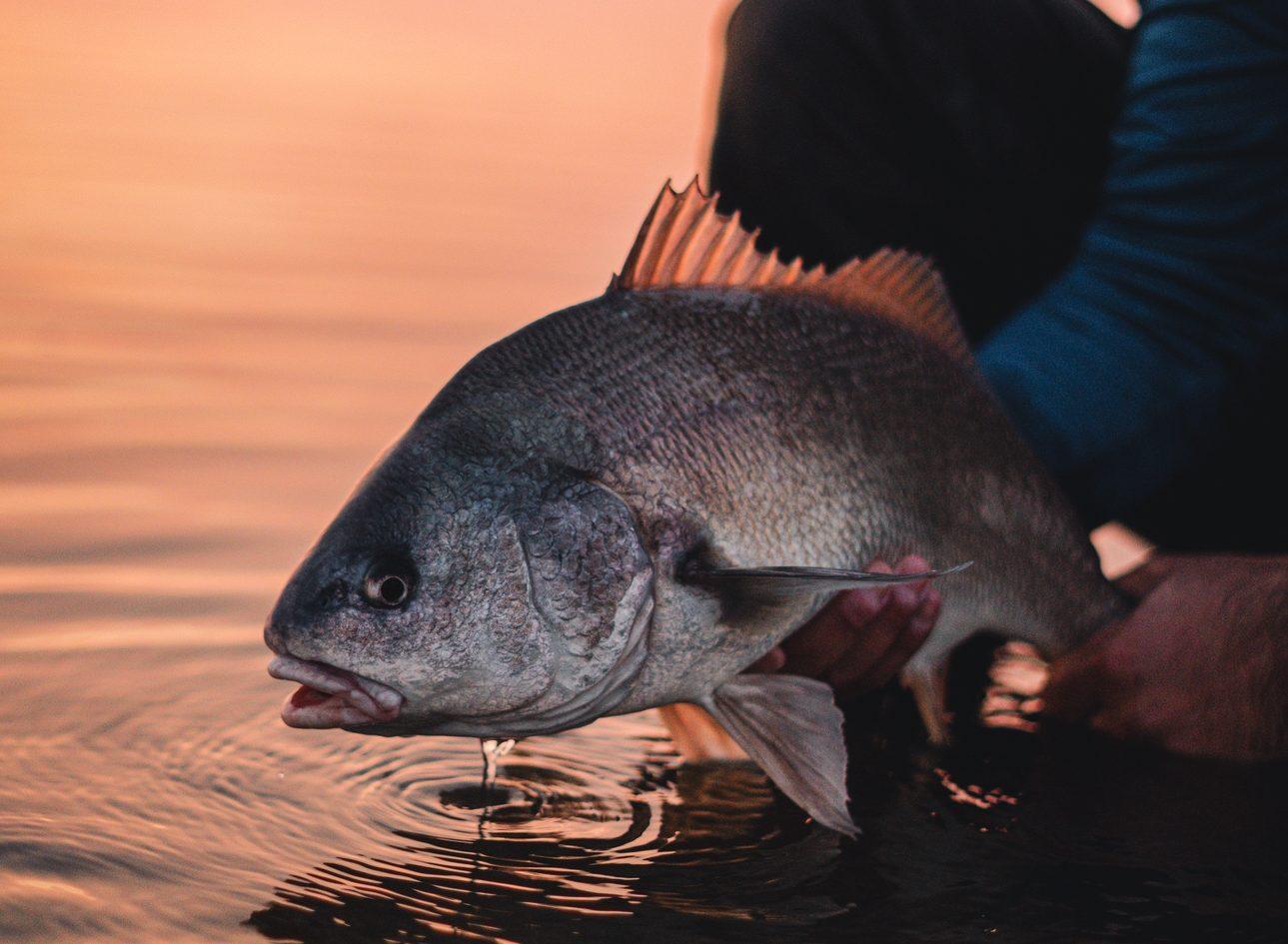Manitoba Species Spotlight: Freshwater Drum – The Underrated Heavyweight
Often overlooked in favour of walleye, Northern Pike and Catfish, freshwater drum are a resilient, hard-fighting species found throughout Manitoba. From the Red River to the sprawling basins of Lake Winnipeg and Lake Manitoba, these native fish are beginning to earn the recognition they deserve.
In this Blog we are going to cover some interesting facts about freshwater drum, where to find them and how to fish for them, including some impressive master angler catches.
Freshwater Drum Identification & Biology
Common Names:
Freshwater Drum are a fish of many nicknames; locals call them silver bass, freshwater bass, sheephead, or even just drum. However, no matter what you call them, these can be a very entertaining fish to catch.

Distinctive features:
Freshwater drum have a pronounced humped back with large, reflective scales that often display a silvery to bronze hue with a subtle iridescent sheen—especially when viewed in sunlight or fresh out of the water.
They also have a subterminal mouth, meaning it’s positioned just below the tip of the snout, perfectly adapted for bottom-feeding on insects, mussels, and other invertebrates.
Freshwater drum get their name from the low, drumming sound they produce by vibrating special muscles against their swim bladder. This sound is most commonly used during the spawning season as a way to attract mates or communicate with other fish. In fact, these vibrations can be strong enough that anglers have reported hearing them through the hull of a boat.

Diet:
Freshwater drum are opportunistic bottom-feeders with a varied diet. They primarily feed on aquatic insects, snails, mussels, and small fish—using their strong pharyngeal teeth to crush hard-shelled prey. In Manitoba waters, they’re often found foraging along the bottom for invertebrates such as mayfly nymphs and invasive zebra mussels, playing a crucial role in the ecosystem.
Lifespan:
Freshwater drum typically live 6–13 years, but in Manitoba’s cooler aquatic habitats—like the Red River and parts of Lake Winnipeg—they can live astonishingly long lives. Aging studies show individuals reaching 60 to 71 years, making them one of the longest‑lived freshwater fish in the province.
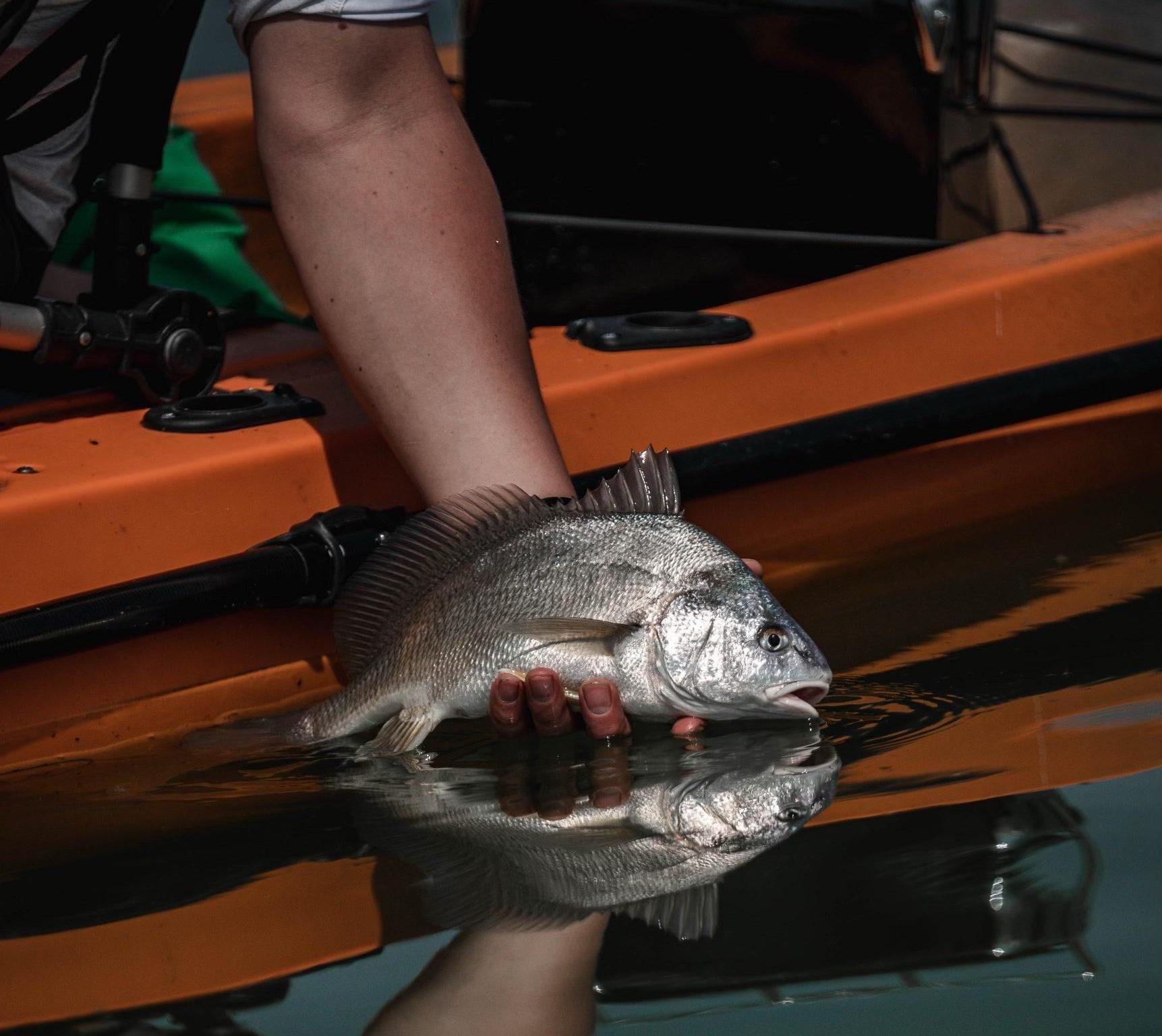
Where to Find Freshwater Drum in Manitoba
Freshwater drum are widely distributed across southern and central Manitoba, thriving in warm, slow-moving waters and large, shallow lakes. Anglers frequently encounter them in Lake Winnipeg, and Lake Manitoba where some of the province’s largest drum are caught. The Red River, particularly around Lockport and Selkirk, is another hotspot known for both numbers and trophy-sized fish. Other productive waters include the Assiniboine River, and various prairie rivers and connected lakes across the region, including the Waterhen River, Whitemud River, Fairford River, Dauphin River, Fisher River, Red Deer River and much more. Their adaptability to turbid, soft-bottomed habitats makes them a common and often surprising catch in many popular fishing locations.

Fishing for Freshwater Drum in Manitoba
Freshwater drum are primarily caught from spring through fall, with peak activity from May to September in southern Manitoba. During winter, they retreat to deep, stable-water zones in lakes, such as Lake Winnipeg, and deep river holes, entering a dormant, low-activity state where feeding slows or nearly stops. As a result, winter catches are extremely rare—but imagine the thrill if one were landed through the ice!
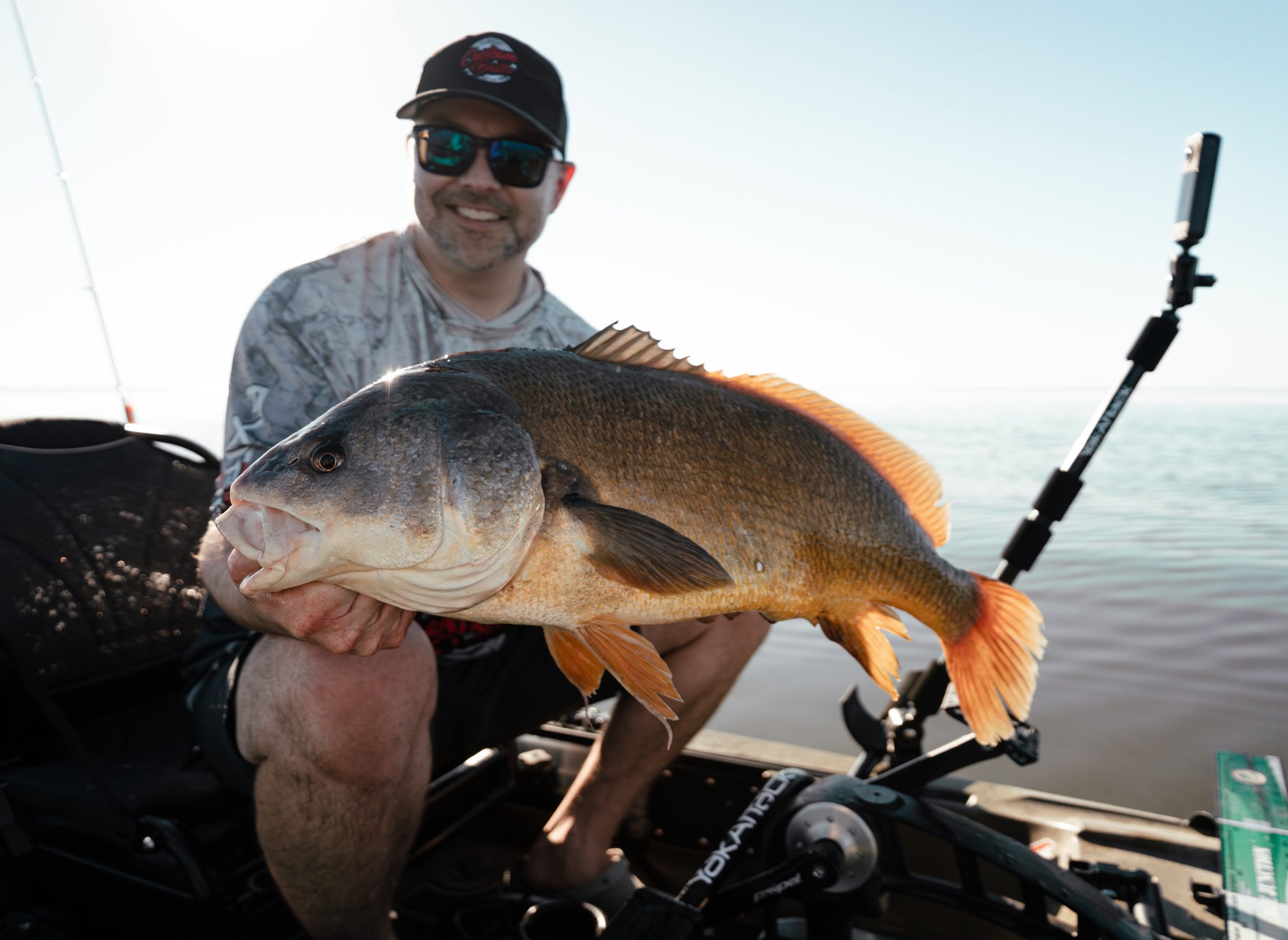
Popular Techniques
- Pickerel rigs tipped with worms or minnows are excellent for presenting bait to bottom-feeding drum.
- Bottom fishing with worms or minnows is a reliable and consistent go-to method.
- Jigging with small soft plastics or jigs and minnows near the bottom often triggers aggressive strikes.
- Many anglers also enjoy catching these drum with a fly rod.
- Crankbaits, spoons, and spinners also work well, and provide some fast action and hard fights, giving anglers plenty of lure options to experiment with
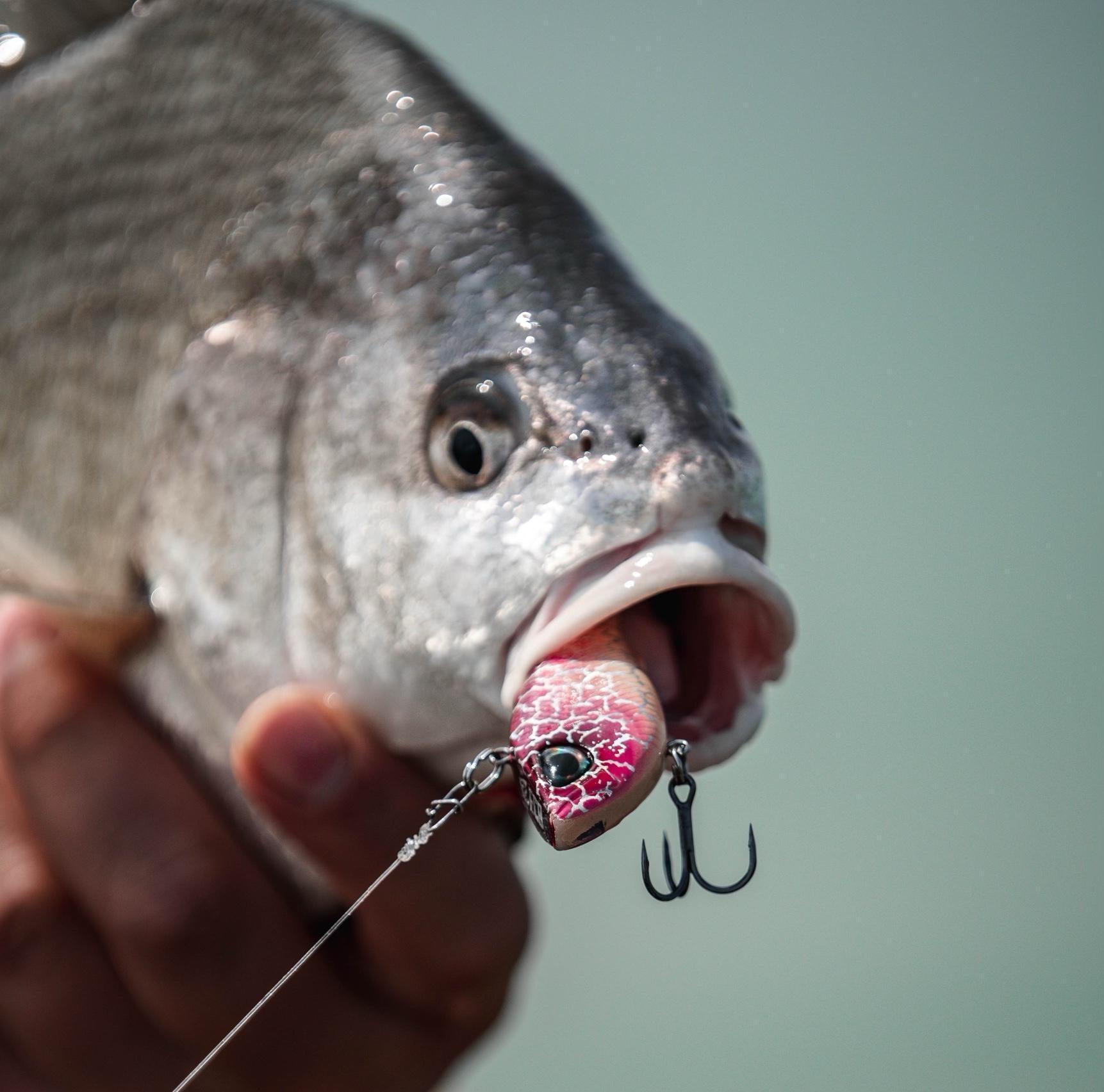
Bycatch Opportunity
Drums are frequently caught incidentally by anglers targeting walleye or catfish. Their willingness to strike a variety of baits makes them a welcome addition to any harvest.
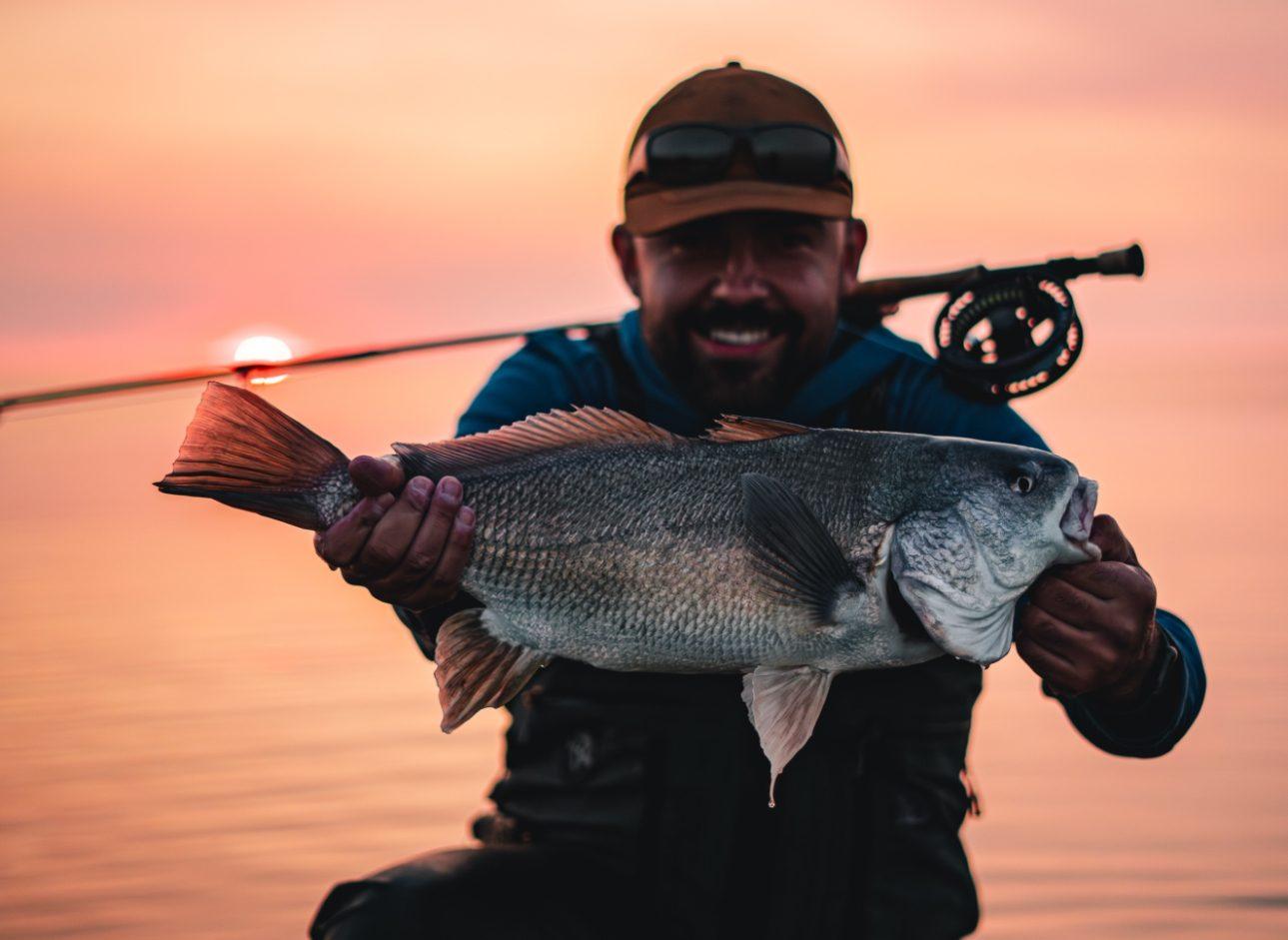
Tackle Tips & Fight
Use a medium-light or medium rod with about 10lb test line —they hit hard and deliver that signature bulldog head-shake fight. Be prepared: even smaller drum will test your equipment, and larger ones, common in Manitoba, can really put up a spectacular fight. Freshwater drum can also be extremely fun to catch on the fly!

Why Drum Deserve More Love
- They’re packed with action: fast, heavy runs and relentless head shakes.
- Accessible for all anglers: easy to catch, often found in areas with good access for shore or boat fishing.
- Underrated sportfish: lots of fun on light tackle, yet often overlooked in favour of classics like walleye.
- Potential for obsession: once you land a big one, you’ll remember the fight, and likely go back for more!
- Excellent Table Fare: Often overlooked for its culinary value, freshwater drum makes an excellent meal with tasty fillets similar to those of walleye.

Manitoba Master Angler Program: Freshwater Drum
In Manitoba, a freshwater drum measuring 24 inches or more qualifies for the Master Angler Program—a long-standing initiative celebrating exceptional catches across the province. Each year, hundreds of drum are entered, with the majority coming from top fisheries like the Red River, Lake Winnipeg, and Lake Manitoba.
Many of these submissions showcase the true trophy potential of drum in Manitoba, with fish well over 30 inches being recorded. These heavyweights not only earn bragging rights but also highlight just how strong and diverse the province’s drum population is.
Here are just a few notable Master Angler drum recorded into the program:

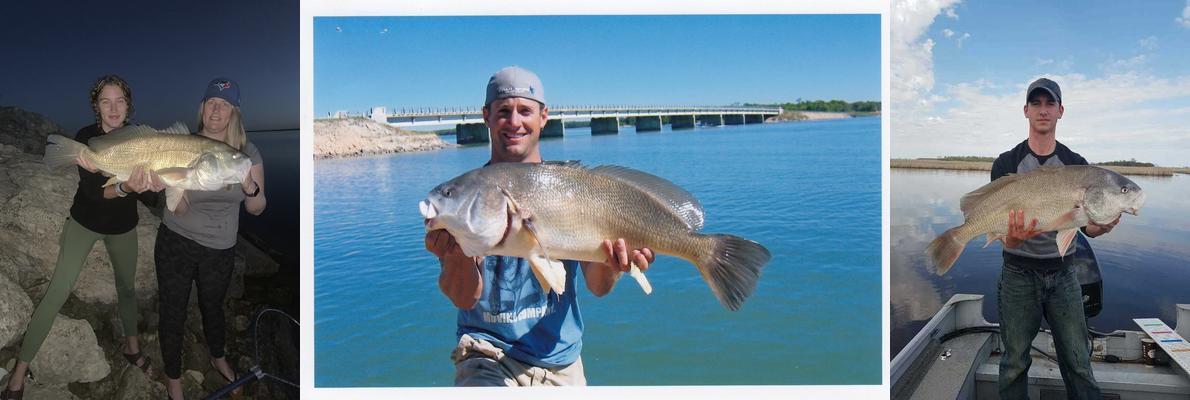

Whether you’re targeting drum specifically or hook into one while chasing walleye or catfish, be sure to measure it—you might just qualify for a badge. Submit your catch through the Manitoba Master Angler app or via the Master Angler website, and you could be featured in the next highlight reel or blog post.
Pro Tip: Drum are highly photogenic in natural light. Their iridescent scales shimmer beautifully, making for great Master Angler photos—just be sure to handle them carefully and release promptly if not keeping.
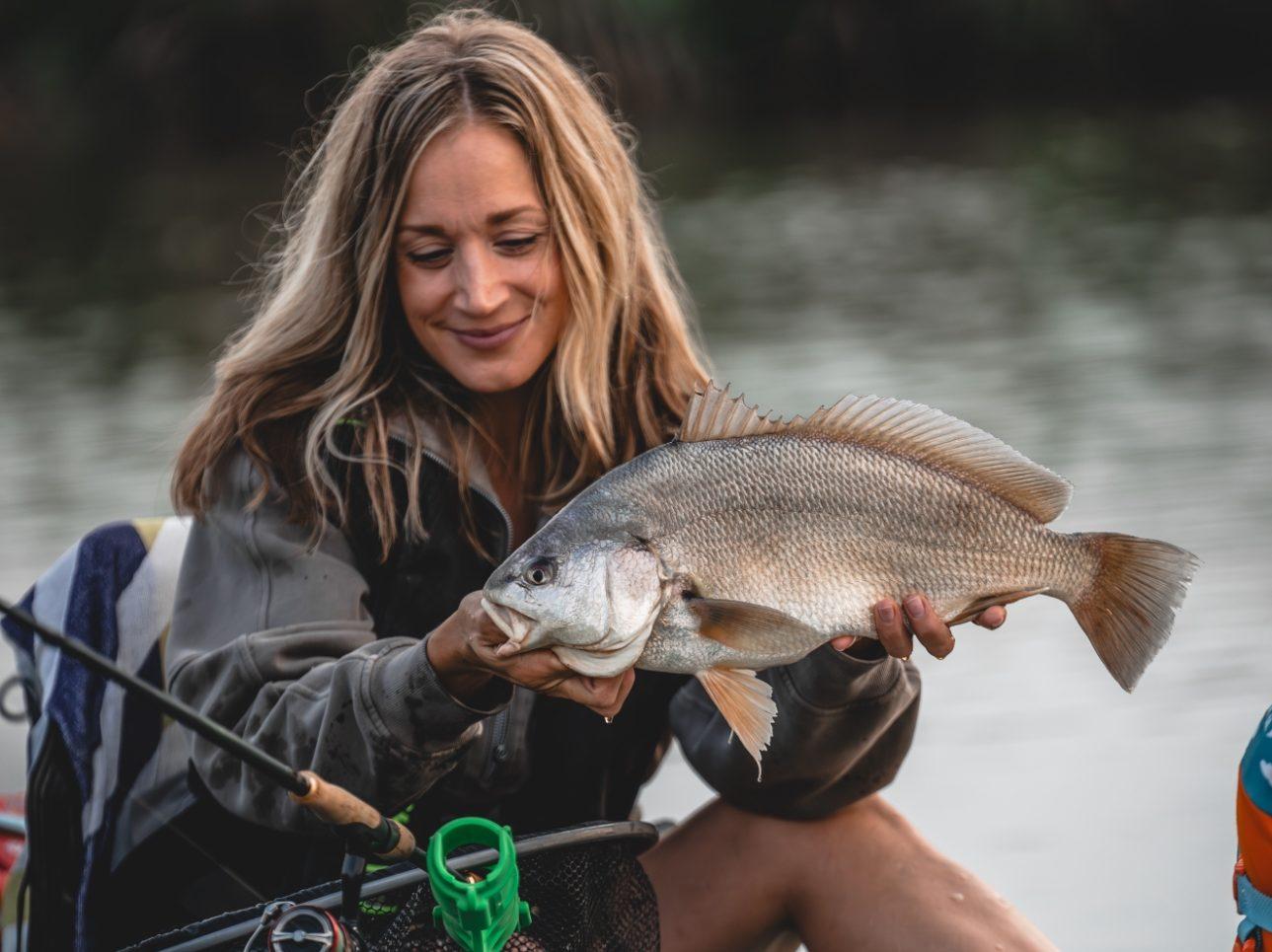
Freshwater Drum Facts (with a Manitoba Twist)
- Manitoba is home to giant freshwater drum.
Lake Winnipeg, Lake Manitoba, and their many tributaries are known for producing trophy-sized freshwater drum, with many Master Angler catches submitted each year. Fish exceeding 30 inches and 20+ pounds are not uncommon, making Manitoba one of the top places in Canada to catch a true tank. - They’re Manitoba’s native “thumper.”
Freshwater drum are the only North American member of the Sciaenidae family—also known as “drums” due to the low-frequency sound they produce by vibrating muscles against their swim bladder. This sound is often used during spawning and can sometimes be heard through the hull of a boat. - They’re built to bottom-feed.
Freshwater drum have subterminal mouths and strong pharyngeal teeth designed for crushing prey like mussels, crayfish, and aquatic insects. In Manitoba’s lakes and rivers, they also feed on mayfly nymphs, small baitfish, and snails—playing an important role in ecosystem balance.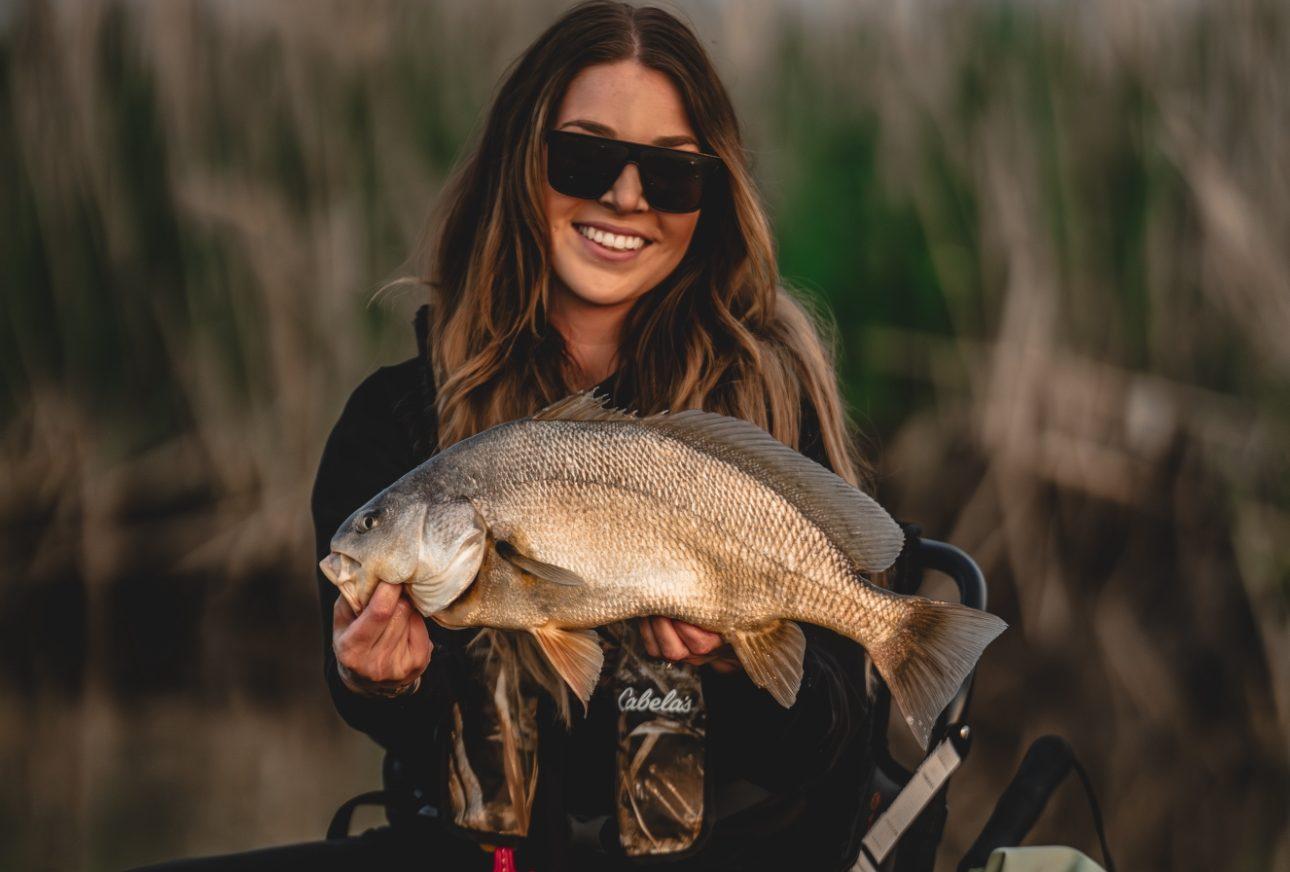
- They’re one of the oldest fish species around.
Some freshwater drum in Manitoba have been aged at over 60 years old—an impressive lifespan for a freshwater fish. This remarkable longevity underscores the health and stability of drum populations in northern systems, such as the Red River and Lake Winnipeg. Interestingly, freshwater drum living in the southern parts of their range, where growing seasons are longer and water temperatures are warmer, tend to grow more quickly but live much shorter lives, often reaching only half the age of their northern counterparts. - They’re masters of murky water.
Drum thrive in turbid environments like the Red River, Lake Winnipeg, and Lake Manitoba. Their lateral line system is highly developed, enabling them to detect prey even in near-zero visibility conditions. - Drum offer year-round angling opportunities.
In Manitoba, freshwater drum can be caught from early spring right through fall, and even through the ice in winter. Anglers targeting them in the Red River or in Lake Winnipeg’s south basin often find them mixed in with walleye and catfish.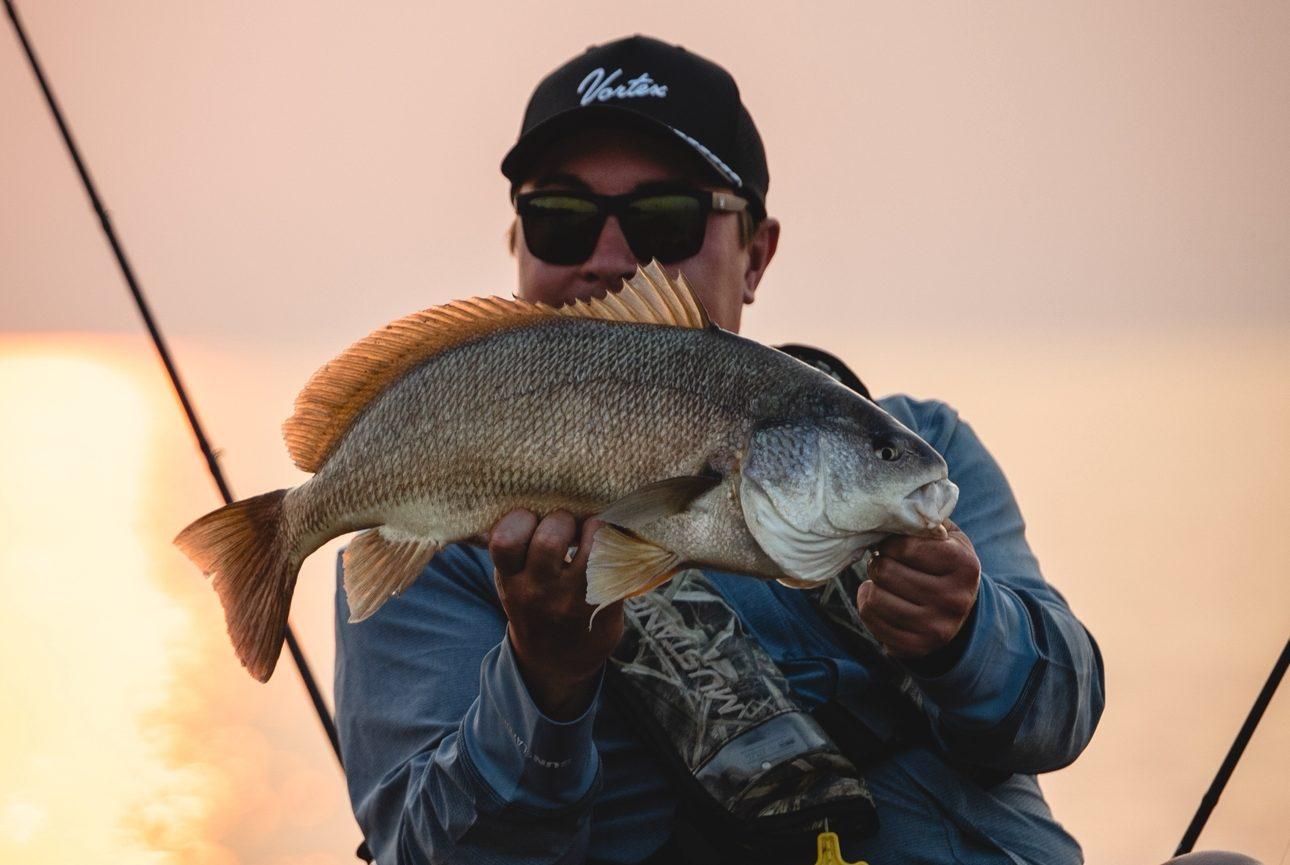
- They’re strong fighters and underrated sportfish.
Don’t let the nickname “sheephead” fool you, drum put up a strong, head-shaking fight. On light tackle, they’re a blast to catch, and Manitoba anglers are beginning to appreciate them more for their sportfishing value. - They’re very tasty fish, which makes for an excellent shore lunch.
While often overlooked, drum fillets can be quite tasty when prepared fresh. Some anglers in Manitoba compare the flavour and texture to walleye, especially when drum are caught from cold, clean water.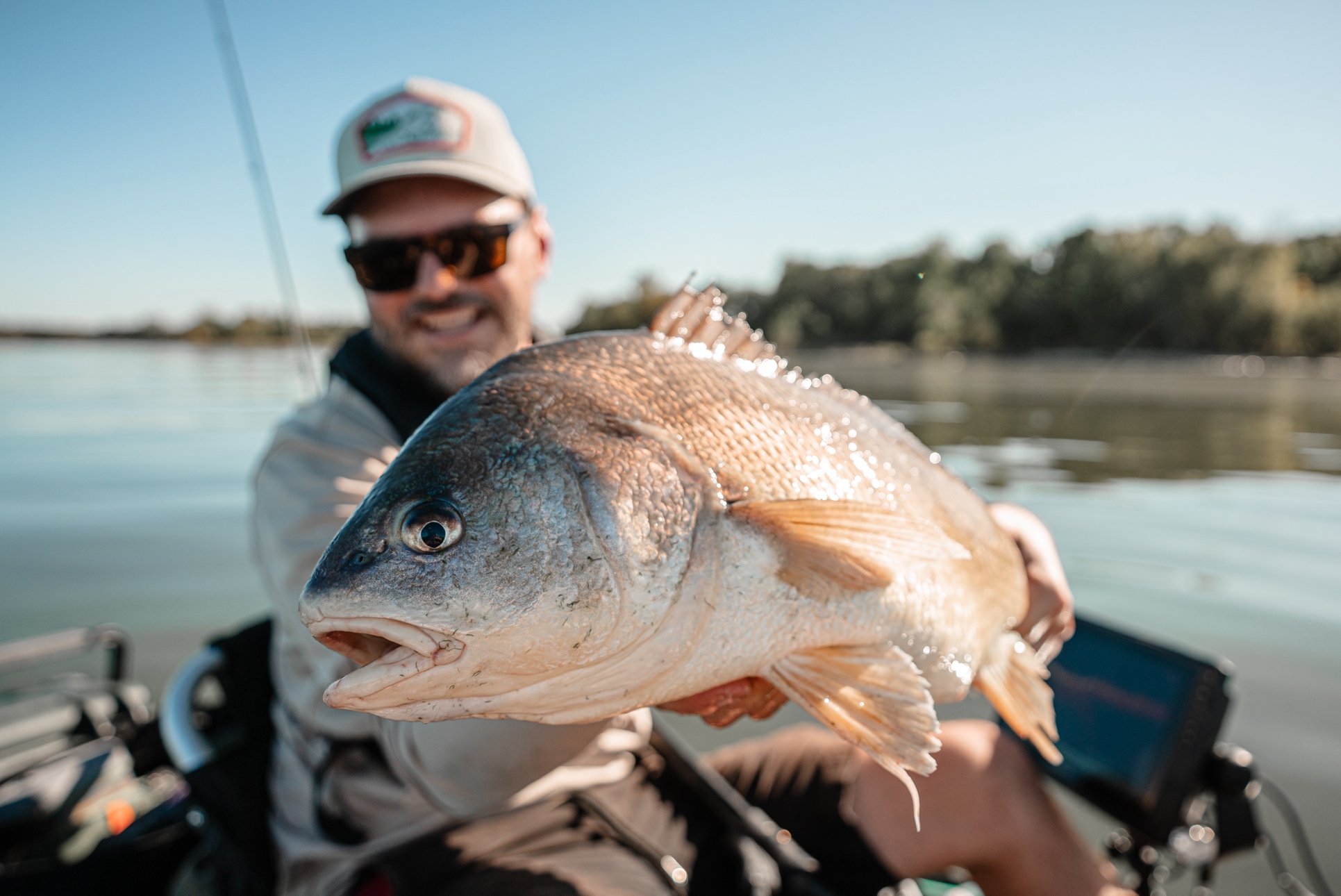
- Drum are a sign of a healthy food web.
Because they feed on invasive zebra mussels, snails, and bottom-dwelling invertebrates, their presence in large numbers can indicate a complex and productive ecosystem. They’re also a common forage species for larger predators like channel catfish and northern pike. - Manitoba Master Angler Fact:
To qualify as a Master Angler, a freshwater drum in Manitoba must measure 24 inches or more. Hundreds in this size range are caught in Manitoba each year.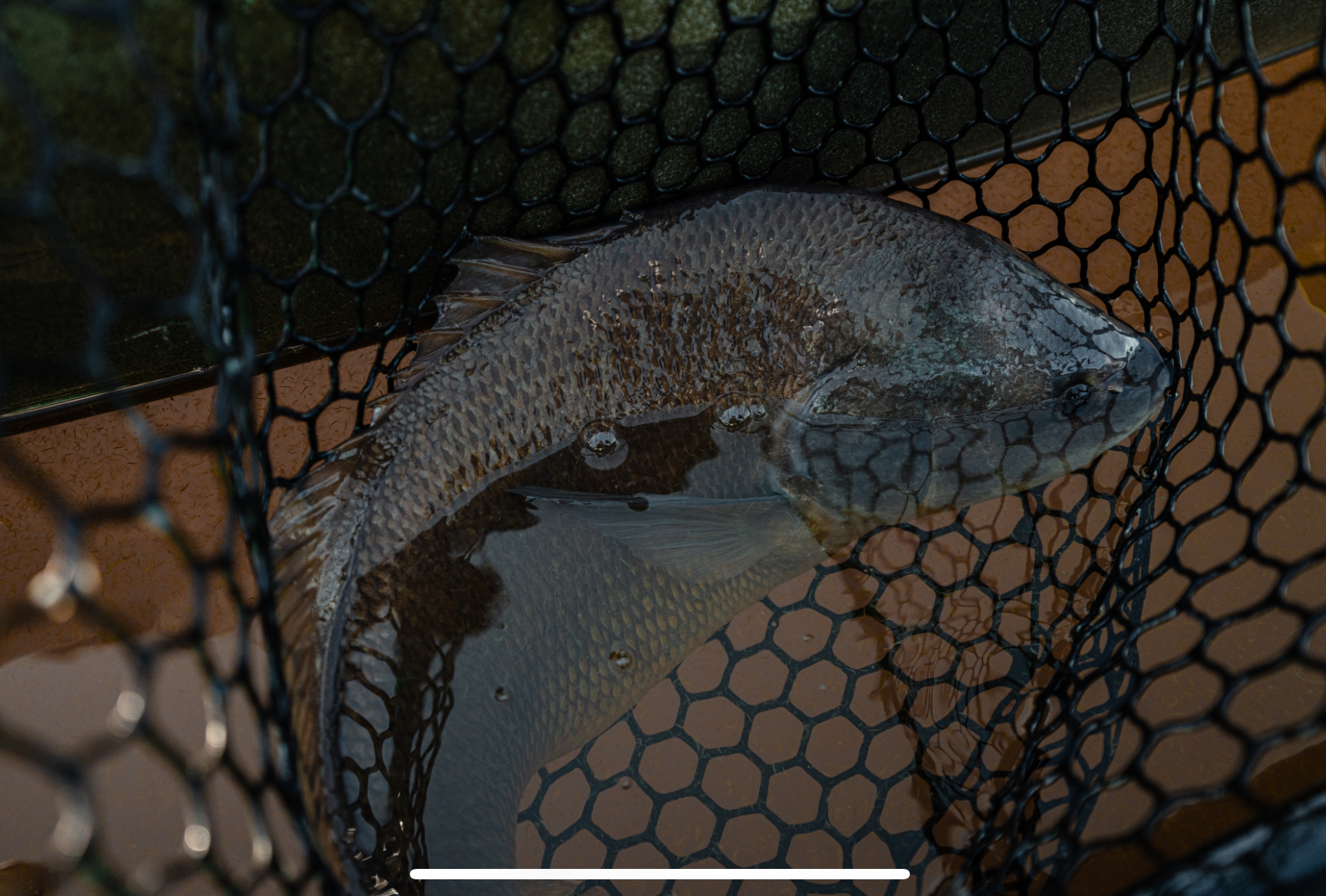
Drum Roll, Please…
Whether you call them drum, sheephead, or silver bass, one thing’s for sure—freshwater drum deserve more credit than they get. With their powerful fights, surprising longevity, ecological importance, and trophy potential, they’re far more than just a bycatch. So the next time you feel that telltale head shake on the end of your line, give drum the respect they’ve earned—and maybe even a spot on your Master Angler bucket list.
